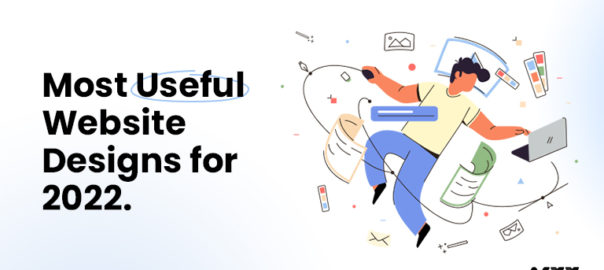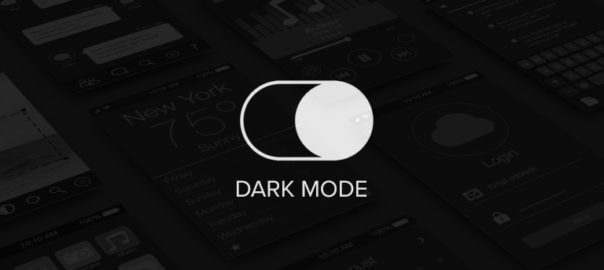Website Layout is the first and most important stage in creating any webpage. This phase lays the groundwork for the majority of your work and determines the overall structure and functionality of your website. A website’s structure, or site design layout, is what decides how that site’s content will be presented and how users will interact with it. Selecting the most appropriate website design for your needs and those of your target audience may be a complex task and that’s where this blog comes in handy.
What Is a Website Layout?
A website’s layout is the blueprint that specifies its overall layout and organization. The design prioritizes the most important aspects of the website and makes it easy to navigate. If a website is going to be successful, it all comes down to the design. The purpose of employing web design services is to attract and retain visitors by making the site’s pages easy to use and logically organized.
What Makes For A Good Website Layout?
Although the variety of professional web design layouts is a source of great admiration, it is important to remember that there are some core elements that every layout type has to incorporate, even if they do it in a non-traditional fashion. The most important things to keep in mind while designing a page are:
- The header should always include the site’s primary navigational features and clearly communicate the site’s structure and how to reach specific content.
- The page’s main content, including images, text, and any other supplementary materials.
- The menu used to navigate the site; might be a sidebar, hamburger menu, scroll-triggered menu, sticky menu, or any other type of menu.
- No matter how small or large a website’s footer is, it should always include links to social media, legal disclaimers, and privacy policies.
Creative Website Layout Ideas
Z-Pattern Style
As soon as we find a new website, we scan it quickly to get a feel for what it’s about. In order to skim and read quickly, many people make the shape of the letter Z or read in a zigzag pattern. Our gaze travels from the upper left to the upper right, then to the lower left, and finally back to the upper right. The Z-pattern website layout takes use of this pattern of reading by laying out the most crucial details over the Z’s surface.
A logo is strategically positioned at the top left of the homepage in this design to grab the viewer’s attention immediately. It’s usual practice to put the menu and a conspicuous CTA beside it, in the right-hand corner. The most important details should be placed along the diagonal of the Z-pattern, which runs from top to bottom of the page. Incorporating eye-catching images and a single, clear sentence that sums up the website’s purpose are two effective methods used by website design professionals.
F-pattern Layout
Similar to the Z-pattern layout, this one takes into account how readers often skim web pages. Websites with a lot of text prompt us to scan or read in an F-shaped pattern. This indicates that we focus mostly on the left side of a page, but we do pay some attention to the top horizontal section.
If you’re going with an F-shaped design, put your money where people’s eyes are most likely to stay: above the fold. To help your site’s users find the content they’re looking for, a navigation menu and anchor texts are both useful additions. Text on the left side of the page may be made more aesthetically pleasing by using the F-vertical pattern’s line. Images, icons, and list formats like bullets and numbers are all useful tools for this purpose.
Full-Screen Image Layout
Fullscreen image layouts may make for striking and engaging home page designs by featuring a huge image in the middle of the screen. Massive media features may tell an audience a lot about you and your accomplishments with just a glance. This design is wonderful since it adapts well to mobile viewing.
Anything from a still image to an animated GIF or even a short clip will do as visual support. However, in order to make the most of this format, the content you provide must be of good quality and appropriate to your service, product, or general vibe. Include some descriptive text with your Fullscreen picture to help users understand what your site is about. Create an attention-grabbing header or motto to showcase your business’s offerings and entice site visitors to read further.
Distinctive Box-like Layout
The grid-based or box-based style of a website combines disparate elements of design into a single, unified whole. Information is contained in its own box, making the whole thing seem more cohesive. The user can click on any of the boxes to be sent to a specific webpage devoted to that topic.
To unify the many boxes on your site, it is advised that you include one huge featured box as the header. The page’s title, a short summary of its contents, and a link bar to other sections of the site can all be included in the featured box. Another piece of advice is to carefully select the images to use in each section of the boxes so that they complement one another and form a unified brand image.
Cards Layout
Cards layouts, like box-based layouts, make use of a number of boxes or other rectangular containers to showcase a wide variety of information. The website’s design is mostly non-hierarchical, with no particular elements being given more prominence than others and all content being given equal weight.
Every single card has the same capabilities, making it simple to copy and paste your data across all of them. The resulting modular design works well across a variety of display sizes, making the site’s content more accessible and less intimidating to newcomers despite its depth. The use of a card layout is a fantastic option for a website with a lot of content, such as a video blog or an eCommerce site.
Split Screen Layout
You may demonstrate to your reader how two seemingly disparate elements can complement one another by using a split-screen arrangement. Any kind of division on your website, whether vertical or horizontal, falls under this category. It facilitates instant decision-making and immediate participation from the reader. E-commerce sites that have different parts for men and women, as well as portfolio sites, company sites, and so on, benefit greatly from split-screen layouts.
Asymmetrical Layout
This trendy website design makes use of a split-screen layout, however, the division between the two halves is not symmetrical. By shifting the apparent center of gravity from one side to the other, this design becomes more dynamic.
To emphasize some details without distracting from the whole, you can use non-standard sizes, colors, and spacing across the page. This may be accomplished in your own website design by making specific items larger, bolder, or brighter to serve as focal points.
Conclusion
If you own a business, your website serves as the virtual equivalent of a physical storefront. Your online shop should mirror the aesthetic quality, simplicity, and warmth that you’d expect from a physical location. We hope that this list was helpful in narrowing down which website design is ideal for your site’s visitors. Contact Us today to evaluate your website’s layout.
Read more about website layout to highlight your content here.



